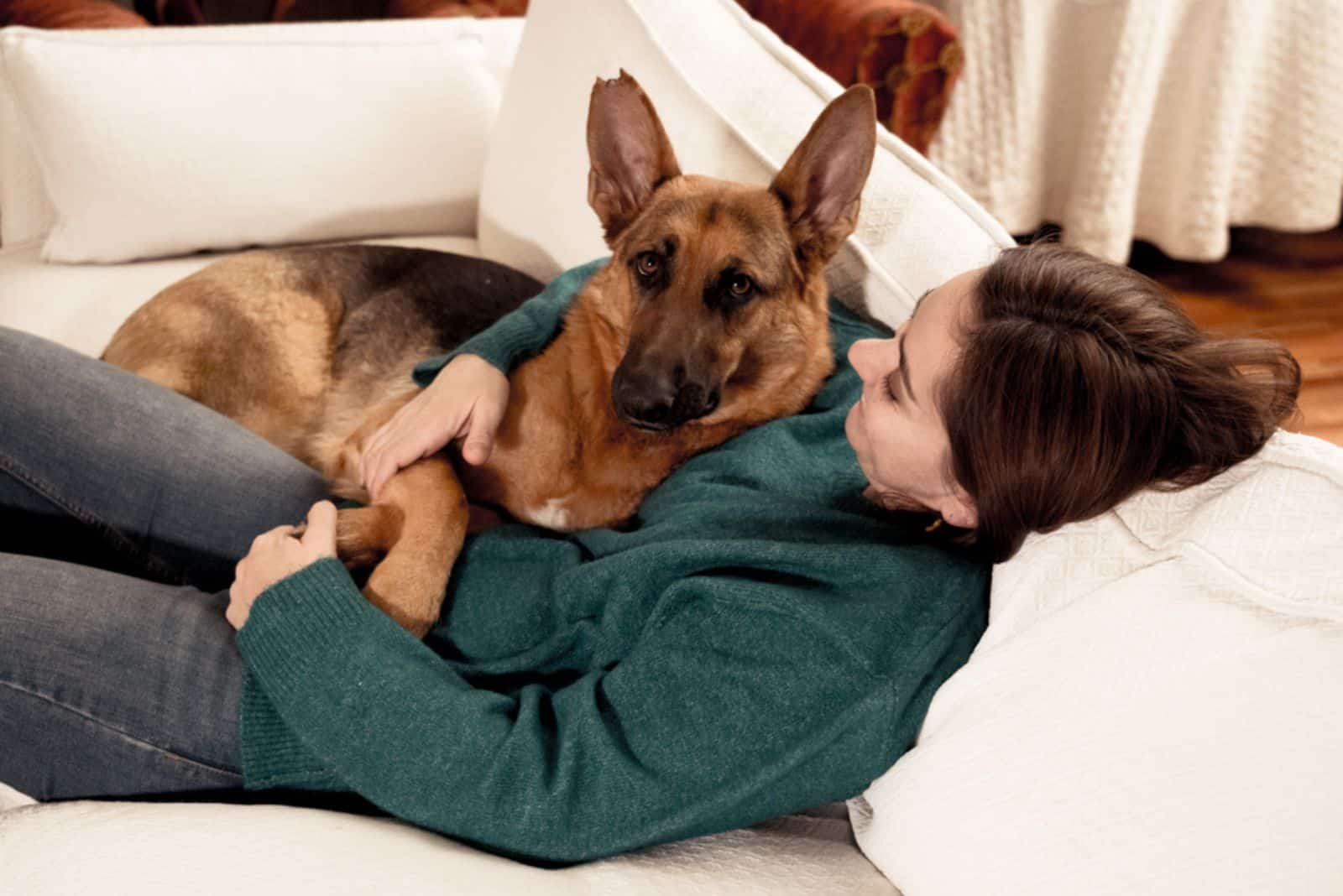Let’s just state this right out of the gate: you should not crop your German Shepherd’s ears.
You have probably seen a lot of pictures on social media of various dogs with their ears cropped. At first, you might not think anything of it, you might not even notice it.
But what if we told you that cropping a dog’s ears is not natural and that the procedure is actually harmful to the pooches? There are a lot of myths and reasons that people use to justify doing it, but the bottom line is that it’s an unnecessary and hurtful thing to do.
Stick around as we try to explain what German Shepherd ear cropping is, why it’s done, and why it should be stopped.
What Is German Shepherd Ear Cropping

Ear cropping is a surgical procedure that is done on over two dozen dog breeds, including Dobermans, Great Danes, Boxers, Schnauzers, and indeed, German Shepherds.
The majority of the flappy part of the ear will be surgically removed during this treatment. Taping may be used to force the ear cartilage into the proper position after the surgery.
Historically, there were many reasons that people did this to their dogs – we’ll get into those later. However, it is now only seen as cosmetic, and most nations have outlawed it.
There are a few things to think about before getting your puppy’s ears cropped, even if it’s still legal in most of North America.
What Do German Shepherds’ Ears Look Like Naturally?
German shepherd puppies have naturally drooping ears right after they are born.
However, around the time they are four-to-five months old, their ears should prop up and stand straight on their own. Some puppies even have their ears up by the age of four weeks.
Starting at four months of age, if their ears have already gone up, they may frequently come back down temporarily. The timing of this also happens to be when they start teething.
The levels and redistribution of calcium within the body are thought to be related to this phenomenon. As long as the ears were up before four months, it is typical and of little concern.
German Shepherd puppies frequently have ears that tilt and flop every which way as they develop the strength to stand by themselves.
Their ears can assume any number of configurations (one up, one down, one this way, one that way). When this occurs, don’t get alarmed because it’s entirely natural and should sort itself out with time.
Why Do People Crop Their Dog’s Ears

Nowadays, ear cropping is primarily done for strictly aesthetic purposes. Many dog owners like the look of it, thinking it makes the dog look more intimidating or “natural.”
The intimidation factor is liked by people who want their dogs to appear scarier than they actually are, most often for the purpose of being watchdogs.
And the “natural” aspect of it means that German Shepherds with cropped ears look more like their ancestors – wild wolves.
What Do The Breed Standards Say?
This can be made worse by some official breed standards that are not clear on whether some ears should be upright or not. However, when it comes to the German Shepherd breed, the American Kennel Club is pretty clear.
While their official breed standard states that “ears are moderately pointed, in proportion to the skull, open toward the front, and carried erect when at attention,” that is countered by the statement that “a dog with cropped or hanging ears must be disqualified.”
So even if a GSD should have naturally upright ears in order to meet the official breed standards, if they have been cropped up to appear upright by the owner, the dog will still not be considered up to standard.
So with that in mind, German Shepherd ear cropping makes even less sense.
Is Ear Cropping Even Legal?
Thankfully, much of the world, including the UK, has outlawed the act of dog ear cropping altogether. The UK Animal Welfare Act of 2006 states that mutilation of an animal except “for the purpose of its medical treatment” is illegal.
This means that all ear cropping is illegal unless a vet recommends it for medical reasons; no UK vet can perform ear cropping for cosmetic reasons.
Even though ear cropping is no longer permitted in many nations, some individuals still practice it, even in the USA. Although the American Veterinary Medical Association (AVMA) advises against it, no state has outright forbidden the practice.
Busting The Myths About German Shepherd Ear Cropping

Now, while the reason for German Shepherd ear cropping in modern times is purely aesthetic and cosmetic, there were different motivations for the procedure throughout the breed’s history.
However, those reasons have been proven to be unjustified, and the myths surrounding them have largely been busted.
Two of the most commonly stated reasons for German Shepherd ear cropping were that dogs with cropped ears hear better than those with floppy ears, and that they are less likely to get an ear infection.
Let’s discuss those two.
Dogs With Cropped Ears Don’t Actually Hear Better
It was once thought that dogs with cropped ears could hear better than those with uncropped regular ears because they could more easily point their ears in the direction of the sound.
Typically, the owner would cut extremely young puppies with shears without any anesthetic, back in the day. You can imagine how painful this was for the pups, and it was probably a trauma that stuck with them into adulthood and made them scared of everything.
Of course, there is no actual proof that dogs with cropped ears hear better than those with floppy ears.
Dogs With Cropped Ears Aren’t Less Likely To Get Infections
In ancient times, dog owners thought that dogs who had their ears completely upright were better protected from ear infections.
And to be fair, there is merit to that claim. Low-hanging or floppy ears were more exposed and could be damaged more easily than those that were standing straight and further away from the ground.
However, this was back in the day when dogs were mostly used for hunting and shepherding, which meant that they were more frequently exposed to tall grass and other potentially dangerous stuff.
Nowadays, when the majority of dogs are family pets and companions which spend a lot of their time indoors, there is really no justifiable need for this procedure to be taking place.
Why You Shouldn’t Do It

The main problem with German Shepherd ear cropping is that it is a non-essential practice and unnecessary mutilation.
Traditional cropping by owners is unpleasant, distressing, potentially harmful to both the dog and the human, and may result in infection or hearing loss.
Furthermore, the procedure is risky even when performed surgically by a professional veterinarian, let alone an amateur. All surgical procedures have some level of risk attached to them, so we only perform them only when absolutely necessary.
Since most dogs are not working dogs, most of the traditional justifications for clipping a dog’s ears are no longer valid.
Dogs with droopy ears may be more likely to develop ear infections, but not all dogs with droopy ears do. Also, there are other factors at play, including those that we cannot change, such as the ear canal’s narrowness, the ear’s capacity to filter out microorganisms, and genetics.
And of course, there is the fact that the majority of German Shepherds end up having naturally upright ears anyway, so risking their well-being by cropping them is pointless.
Final Thoughts
Although animal rights have come a long way in recent years, there is still more to be done on a global scale.
By being aware of the unique problem of dogs having cropped ears and refraining from endorsing this practice in any way, you can contribute to the cause.
German Shepherds – and all dogs, for that matter – whether their ears are naturally floppy or upright, should not be exposed to potentially risky surgical procedures purely for aesthetic reasons. They are adorable just the way they are!
Read next: Doberman With Uncropped Ears: The Truth About Ear Cropping
